KANI is a light, electric powered single person aircraft concept for the year of 2030. It features tilt rotor technology and a 1+1 seat layout meant to serve in national parks for low altitude search and rescue operations. This aircraft would be a great transportation to help people who have sustained little to no injuries in areas that are difficult to reach quickly in emergency situations. We think the design should be improved by adding some space to carry the injured patient when necessary.
It was designed to improve the overall efficiency of SAR operations. Nowadays, rescue operation is usually done on foot or by heavy helicopters that are usually sent from coast guard or military bases that can be located miles away and take a while to get to the area. But national parks do not have anything like this on duty, mainly because of high cost of maintaining a helicopter that can cost $2000 an hour, and those are just the hard cots. Therefore helicopter services have to be outsourced.
Designer : Tautvydas Bertasius
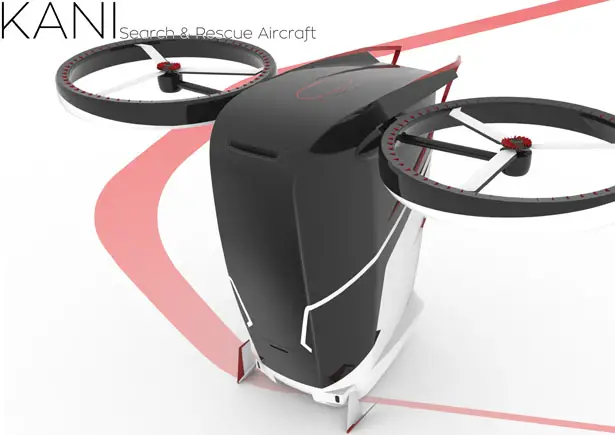
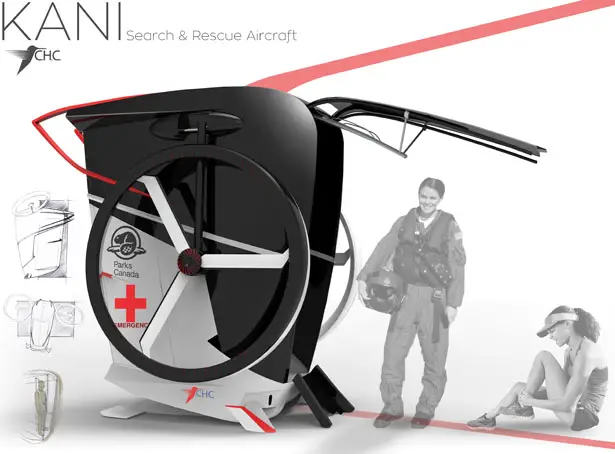
If National Park Service could provide a number of electric light aircrafts that are cheap to buy, they could be sent all at once within a minute of getting an emergency call. And because of its small size and low weight such an aircraft is very agile and maneuverable, and can land in places where heavy helicopters couldn’t. Moreover, it is easy to transport on a small trailer.
The whole structure of KANI is constructed of carbon fiber monocoque with aluminum honeycomb mesh plate core, a technique used to build F1 cars. All the windows are made of laminated polycarbonate to protect pilot and the passenger from bird strikes. Such windscreens have been used in NASCAR since 1997 for not breaking even after being hit by debris traveling at 200mph.
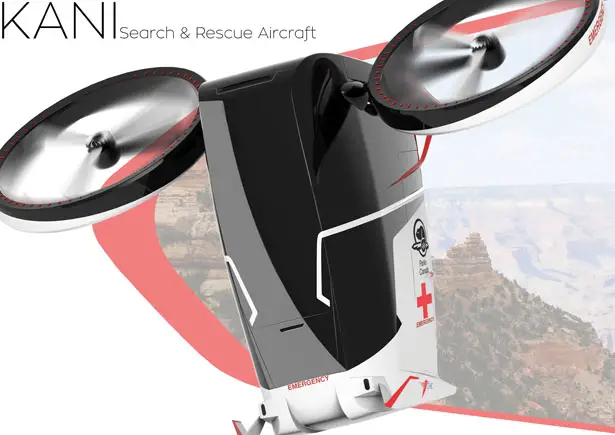
The interior is designed to have as few components as possible, because the pilot is standing while flying the aircraft with special harness designed to keep him safe and secure. The harness itself is made of two parts and was inspired by standing rollercoaster harnesses. The pole that has an integrated backrest is connected to both the floor and ceiling and can be moved from side to side if needed.
The chest piece has to be moved up and down to get in or out of the aircraft. It has two push-arms attached to the lowest point that are connected to the integrated pillars. This makes opening and closing of the door very easy.
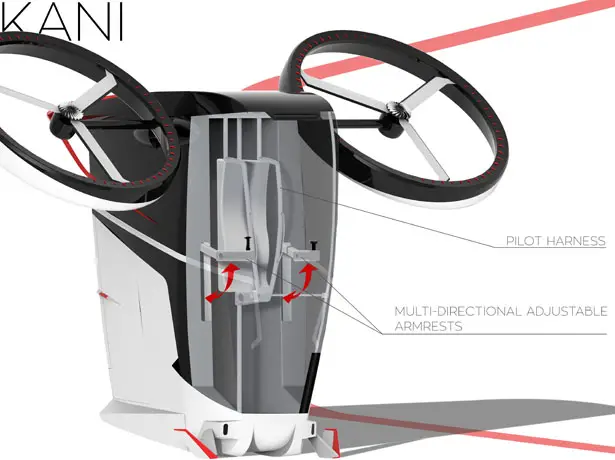
The most important piece of technology in KANI Light Aircraft concept is the fold down shroud enclosed rotors and its lifting mechanism. The lifting of the rotors is done by electro-mechanical actuators that can be moved from side to side, to adjust the positioning of the rotors from side to side. This need to be done because of changing center of gravity depending on how much weight is at each end of the aircraft at any given time.
The integrated battery packs are charged using wireless technology. A network of forest ranger cabins would serve as charging stations if needed. There is an opening on the roof for ballistic parachute in case of an emergency.
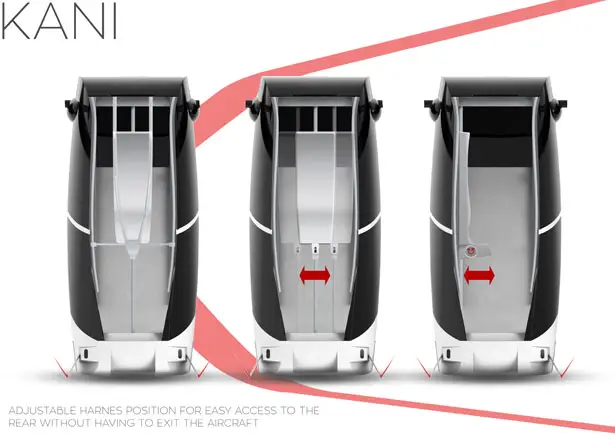
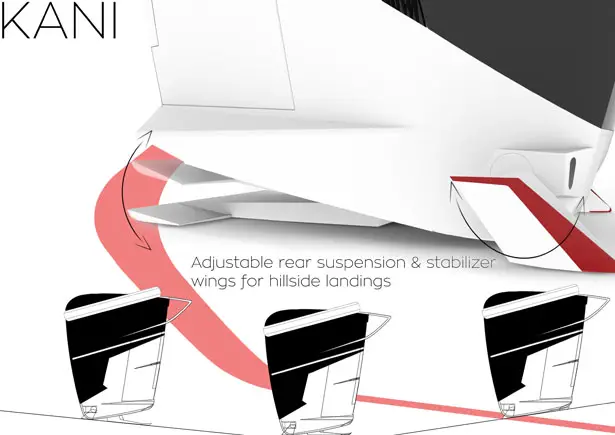
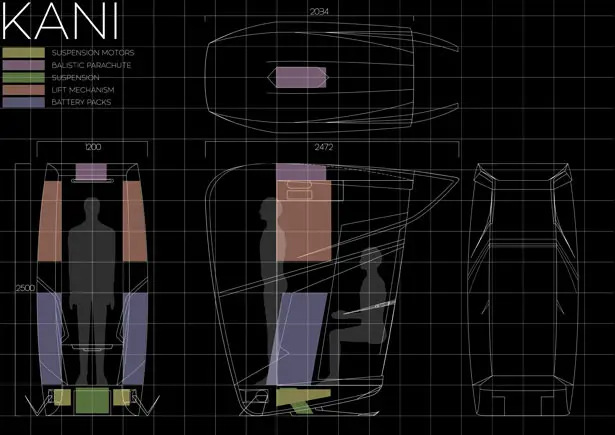
Tuvie has received “KANI Light Aircraft” project from our ‘Submit A Design‘ feature, where we welcome our readers to submit their design/concept for publication.








Cool concept